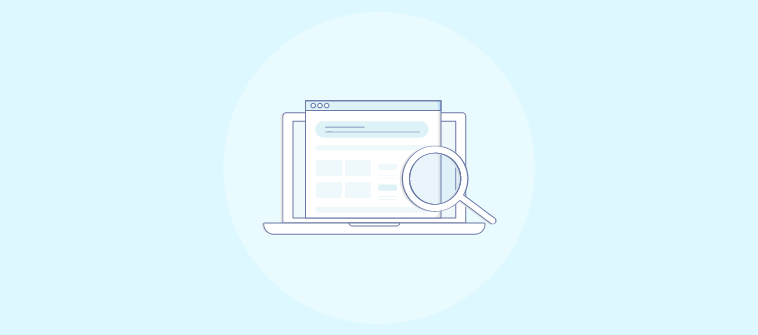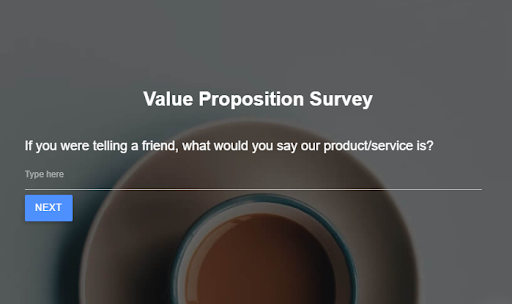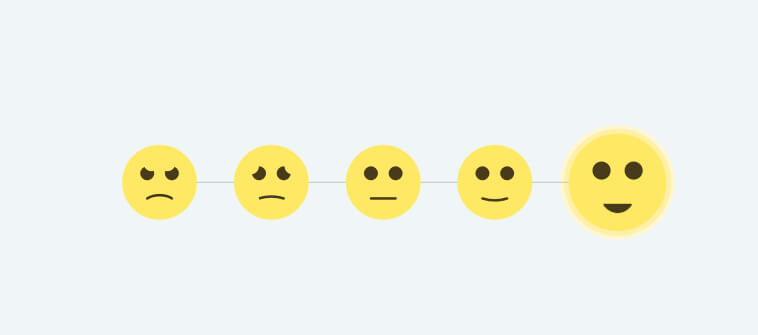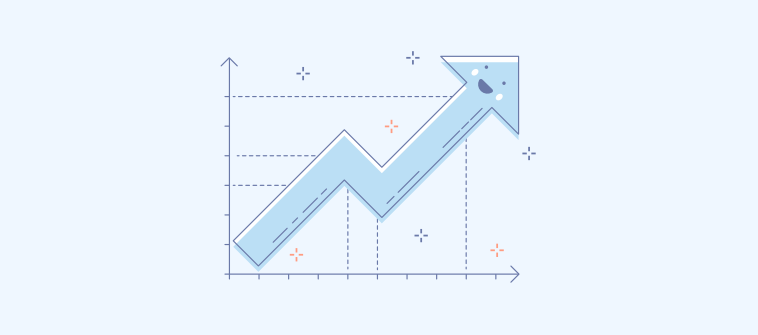
Market research experts and statisticians rely so much on numerical data that they forget to ask the bigger questions.
“What sets us apart from the competition? What can we do to improve our product?” Qualitative data can help you get in-depth, intimate answers to such big questions that can never be discovered using a quantitative approach.
In addition to this, qualitative data can help you encourage discussions, monitor changes in customer behavior and attitudes, conduct meaningful interviews or surveys, and a lot more.
So if you are looking to add qualitative data to your research but have tons of questions, we have got your back. In this blog, we will explore the qualitative data definition, the various methods, advantages, disadvantages, and most importantly, we will show you how you can analyze qualitative data in 5 simple steps.
What is Qualitative Data?
Qualitative data refers to non-numerical information (such as text, video, or audio) that can be used to gather insights about a topic or generate new ideas for research.
Qualitative data is usually gathered from surveys, interviews, observations, or focus groups. With these methods, you can go beyond just numerical values and understand your target audience’s subjective perceptions and opinions.
So how is qualitative data different from quantitative data?
From the above definition of qualitative data, it is clear that qualitative data describe the “quality” of something. In contrast, quantitative data represents the “quantity” or numerical value that can be used for statistical analysis.
Quantitative data is usually obtained after asking questions such as How much? How often? How many? For instance, while quantitative data can tell you how much a person weighs, it will not help you understand that person’s thoughts on physical fitness.
Examples of Qualitative Data
If you look closely, you can find several examples of qualitative data in your everyday life. For example, when you say the man has black hair or the candy tastes like vanilla, you mention qualitative information.
Here are some more in-depth examples:
After completing an event, the organizers wish to take feedback from some people who attended the event. They arrange a short interview and ask event attendees questions like – “What was the best part about this event?” or “What can we do to improve our future events?” The answers to these questions will help the organizers capture qualitative data and determine the success of their event.
During a test, a school student is asked to narrate a poem in front of the entire class. Instead of giving a numerical grade to the student, the teacher gives him feedback on his pronunciation, tone, and fluency.
While testing the performance of a mobile application, the testing team needs to look for bugs. Since the application must be launched within a week, the team ranks bugs according to their severity. The severity of an application bug may be ranked as critical, high, medium, or low. This is a great qualitative data example.
Importance of Qualitative Data
Qualitative data is descriptive and observational in nature, and therefore, it is used by leading researchers and statisticians. In fact, qualitative research has a rich history — it has been used in fields of anthropology, sociology, health sciences, education, history, etc.
Business experts use the right blend of qualitative and quantitative data to achieve success in the contemporary world. In addition to measuring profits and sales, they even dare to ask the bigger questions: How can we improve our business? What can we learn from our competitors?
We have discussed more such benefits and advantages of qualitative data in this blog. Stay tuned to find out.
Qualitative Data Collection Methods
Whether you are an entrepreneur or a research expert, there are multiple ways to get closer to the data you need. Let’s look at the top data collection methods in qualitative research.
1. Online Surveys

An online survey is considered one of the most popular qualitative data collection methods. But what makes them so popular? Well, you can easily create surveys using an online survey tool and share them with your target audience in minutes.
Moreover, surveys are quick, easy to analyze, and much cheaper compared to other data collection methods. Another benefit is that people can take these surveys at their own convenience. They can use their laptop, mobile phone, tablet, or any other device.
Based on your research goals, you can create surveys, polls, or questionnaires with open-ended questions such as :
- What is your best travel experience?
- What will the future of technology look like?
- What can we do as a business to enhance your shopping experience?
2. Interviews

Source: Freepic
An interview is a more personalized method of collecting qualitative data. The interviewer can arrange a one-on-one session and ask various questions to the interviewee. A great advantage of this method is that the interviewer can probe or clarify any answers to open-ended questions in case of any doubts.
Depending on your research objectives, the interviews can last anywhere from a few minutes to even half an hour. Most researchers prefer telephonic interviews and video conferencing as they are more convenient for the interviewee. You can even arrange on-site (face-to-face) interviews; however, you will have to make necessary arrangements for that.
3. Focus Groups
A focus group refers to a small group of carefully selected participants to carry discussions on a research topic. For example, you can choose a group of active cigarette smokers and ask them to discuss why quitting nicotine is so hard.
Unlike surveys, focus groups do not discriminate against people who cannot read or write. With this method, you can understand what people think and, more importantly, how they defend their opinions in front of others. Instead of spoonfeeding questions to your group participants, you can encourage them to talk to each other, raise questions, and respond to each other’s opinions peacefully.
4. Social Listening
Social listening refers to tracking social media conversations, comments, mentions, etc., to understand what customers are talking about your brand. The process of social listening allows you to understand which products customers like the most, what they think, and what all things they find problematic.

Source: Semrush
With social listening, your brand can even realize its position against direct and indirect competitors in the market. You can understand all factors your target audience finds appealing, such as customer service, timely deliveries, easy returns, etc. In addition to social media channels, you can practice social listening on community forums, online discussion platforms, and more.
5. Secondary Research
For qualitative data collection, you don’t always have to put in fresh efforts. You can refer to existing data in the form of books, case studies, articles, audio or video recordings, etc. For example, instead of interviewing a famous personality, you can refer to their past interviews on YouTube, in magazines, news articles, and other sources.
So why is this method so popular? Well, in today’s online world, it is quite easy to find and gather any information. Moreover, secondary research is less expensive compared to primary research. You can even save tons of time for your team.
Read More: Online Market Research Survey Templates
Qualitative Data Analysis in 5 Easy Steps
Qualitative data analysis refers to the process of organizing data and making the right interpretation out of it. Let’s see how you can easily make sense of your data in 5 simple steps.
1. Bring All Your Data Together
Qualitative data is so different from one another that it may look unstructured at first glance. For example, suppose you decided to take customer feedback via surveys, interviews, and social media. In that case, you can have single-word feedback by one customer and a long one by another.
So in the first step of qualitative analysis, you need to bring all your collected data (surveys, observations, case studies, audio or video files, etc.) in one place. For better results, you need to convert your data into text format. For example, if you have a recording of a customer interview, you will have to type the conversation you had.
2. Review And Eliminate Faulty Data
Once you have all your data in one place, you can get a clear picture of what is important, what needs to stay, and what needs to be eliminated. For example, if you decided to share a post on social media asking for customer feedback, some comments cannot be related to your research. Someone could have tagged their friend on a comment, promoted their business, or shared anything that is not relevant to your research.
Therefore, in this step, you need to eliminate all the unwanted data to leave you with the “information cream” or desired data. This process can be challenging; however, it will only help you make the right conclusions.
3. Code Your Data
To make sense of the data you are left with, you need to develop a coding system. The established set of codes will help you categorize your qualitative data into meaningful groups.
To help you understand better, let us take the same example forward. When you have gathered customer feedback from multiple sources, you can create a separate code for each source. For example, you can divide your data into codes such as “Survey”, “Interview”, “Social Media”, “Case Studies”, etc. Now, to further categorize your data, you can create sub-codes under the main code (let’s take “Survey”) such as website survey, email surveys, and so on.
4. Establish Themes, Patterns, and Relationships
In this stage of qualitative data analysis, you need to sit back and find common themes or patterns in your coded data. Carefully check the similarities and differences between different codes and note them down.
For example, you can spot the number of positive feedback gathered from your different sources (codes) and see which channel generates more positive responses than others. For instance, you might find that people share more positive reviews on your website than on social media. You need to find more such relationships between different data sets and get closer to your research goals.
5. Make Conclusions and Share Your Data
This is the final stage where you can take a bird’s eye view of your data, connect the missing dots, and make necessary conclusions. For best results, you must summarize your findings, write them down, and create presentation-ready reports.
Make sure you share the report with your team members, key stakeholders, and other people who helped you with your research. In this report, you can also include the challenges you faced while collecting or analyzing data so that you can avoid them in future studies. As a research best practice, you can even mention the sources from which you gathered secondary data.
Advantages of Qualitative Data
Qualitative data is a vital ingredient of every in-depth research. Let’s see how it can benefit you in both the short and the long term.
1. Encourage Discussions: No matter if you capture qualitative data via open-ended surveys or interviews, people can openly discuss different topics. For example, if you ask your customer how your business can improve, the customer can suggest to you some important improvement areas that you would have otherwise never noticed. Therefore, qualitative research leads to better and open discussions.
2. Monitor Customer Behavior & Attitude: With qualitative data analysis, you can monitor the behavior and attitudes of your target audience. You can gather information about their likes, preferences, shopping habits, etc., over some time and put yourself in a better position to meet their expectations. You can even segment your audience into meaningful groups based on this information.
3. Complete Your Research: For any successful research and data analysis, you need both quantitative and qualitative data. For example, you might have someone’s voter ID number (quantitative data). However, to understand their take on elections or democracy, you need the help of qualitative research. This way, you can expand your research scope and make analysis more efficient.
Disadvantages of Qualitative Data
Well, if there are some benefits, there are limitations as well. Let’s look at the various cons of qualitative data.
1. Covering a Big Audience Can Be an Issue: For quantitative data analysis, you can capture data for thousands of people, feed this information into your system, and make necessary conclusions. However, qualitative feedback can be so different from one person to another that it’s difficult to cover a big sample size. Imagine taking interviews of thousands of people and arriving at a single conclusion.
2. Lack of Privacy: The people taking part in your qualitative research might not be comfortable sharing their thoughts on some sensitive topics. Moreover, For example, some people might not be comfortable talking about their relationships, medical ailments, political views, religious beliefs, and so on. Due to this lack of privacy, you may end up collecting incomplete data from your target population.
3. Requires a Skilled Moderator: For conducting one-to-one interviews or analyzing survey questions, you need a team of skilled, trained, and experienced moderators. For example, the interviewer must be knowledgeable enough to know which questions to ask next, depending on the flow of the conversation. So it is obvious that you will have to incur the cost of hiring and training these moderators.
Complete Your Research With Qualitative Data
To make any decision, big or small, you need the right data at your fingertips. You can dig a little deeper into your audience’s thoughts, ideas, and perspectives with qualitative data and see a much clearer picture.
While data analysis in qualitative research can be challenging, it is not rocket science. Before you begin your analysis, make sure you have gathered all your information in one place and removed faulty data. Assign codes to different data sets, identify relevant patterns and create presentation-ready reports.
If you are looking for ways to complete your qualitative research at a low cost, then you have come to the right place. With ProProfs Survey Maker, you can create unlimited online surveys and share them with your research participants or target audience in seconds.
FREE. All Features. FOREVER!
Try our Forever FREE account with all premium features!







